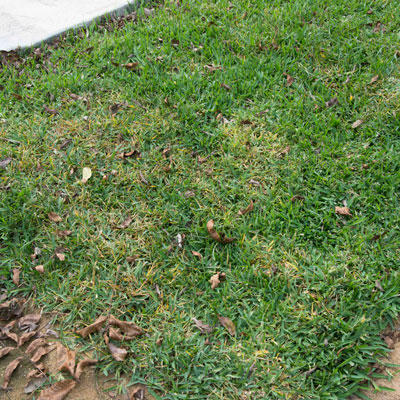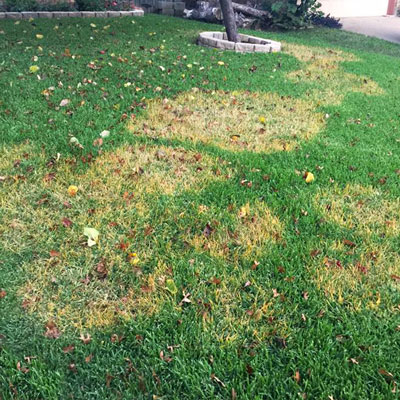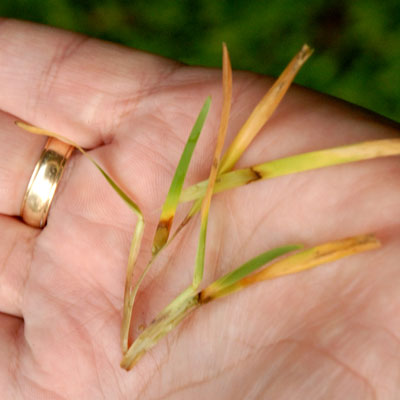Brown Patch Will Be Coming
I promised you last week that I’d discuss brown patch as it might attack your St. Augustine in this issue of e-gardens, and I’m here to deliver. But it’s been so warm and comparatively dry these past several weeks that folks really haven’t started asking questions about it. But, oh how they soon will! Just as they have for all 47 falls that I’ve been helping gardeners in Texas.

Photo: Learn to recognize early signs of brown patch. Grass blades will be subtly yellow in round patches. Within a couple of days entire area will turn brown.

Photo: This is brown patch at its worst. I’ve not seen it this bad yet this year. Photo is from early November a couple of years ago.

Photo: Pull on affected blades and they will offer no resistance. Examine them closely and you’ll see the decayed areas at the bases of their sheaths, where they attach to the runners. That is confirmation of brown patch.
Quick facts about brown patch…
Here are the things you’ll want to remember about this common disease.
• Attacks primarily St. Augustine, and then only the leaf blades – not the runners or roots.*
• Grass turns yellow, then brown in round patches 18 to 24 inches in diameter.
• Blades pull loose from runners easily. You will see the decay at the bases of the leaf sheaths, where blades attach to the runners.
• Cool-season disease that is almost never seen until late September or October. This distinguishes it from chinch bugs and gray leaf spot that were seen this summer and into September and take all root rot that was seen in April and May.
• Most common in moist conditions, so often begins to appear with first rains of fall.
• Worse when lawn is watered in evening or overnight. Early morning watering is best.
• Since only leaf blades are affected, affected areas will green up again if weather remains warm long enough.
• Brown patch is not fatal, but it weakens grass in affected areas enough that extreme cold in winter can do more damage than normal or necessary.
• For that reason, and because it makes lawn look so unsightly, treating for brown patch is recommended.
• Your local independent nursery will have fungicides labeled for control of turf diseases such as brown patch. For some reason these products are sometimes difficult to find in national chain stores. Ask for help from a Texas Master Certified Nursery Professional.
* Can attack fescue, in which case it will destroy entire clumps.
